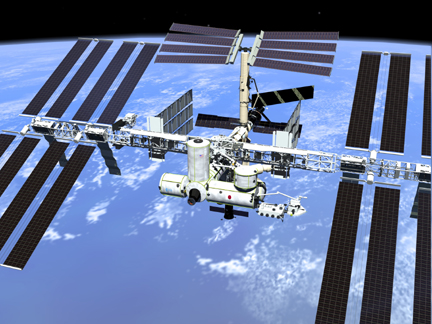This website is kept for archival purposes only and is no longer updated.
About ACCESSACCESS has two detectors, each optimized to look at a different section of the periodic table. The calorimeter utilizes tried-and-true technology from the early days of particle detection. What's new for this detector is the equipment that will be used to keep it running for four years in the harsh environment of space. The ACCESS team is now developing this equipment for the proposed 2007 launch date. The Transition Radiation Detector (TRD) is a new type of technology altogether, though stemming from European research in the 1960s and 1970s. The detector has been incorporated in only a few cosmic ray missions, namely NASA's Cosmic Ray Nucleus Experiment (CRNE) mission, which flew on the shuttle, and subsequent high altitude balloon experiments.
One other novel feature of the ACCESS mission is its location. ACCESS will share a spot on the International Space Station, the largest and most complex international scientific project in history. When the Space Station is fully assembled it will house six or seven scientists and a state-of-the-art, multipurpose laboratory.
 In the News
|